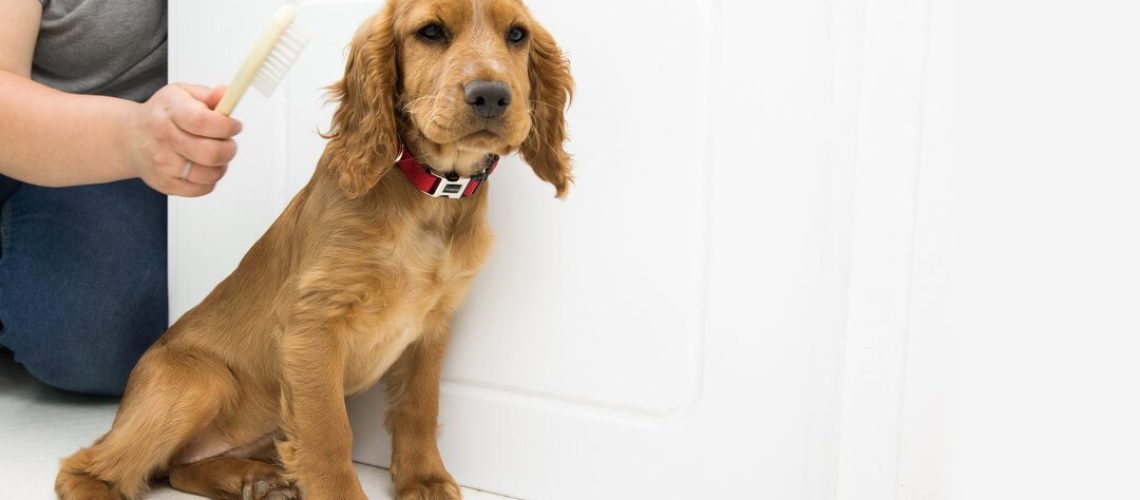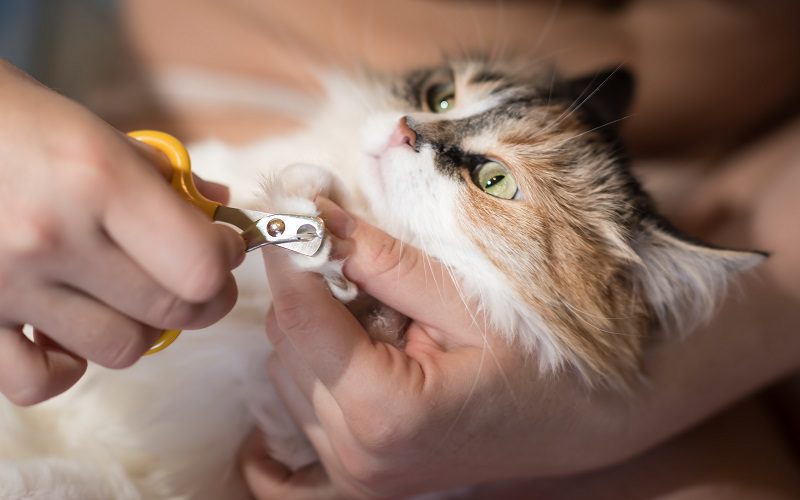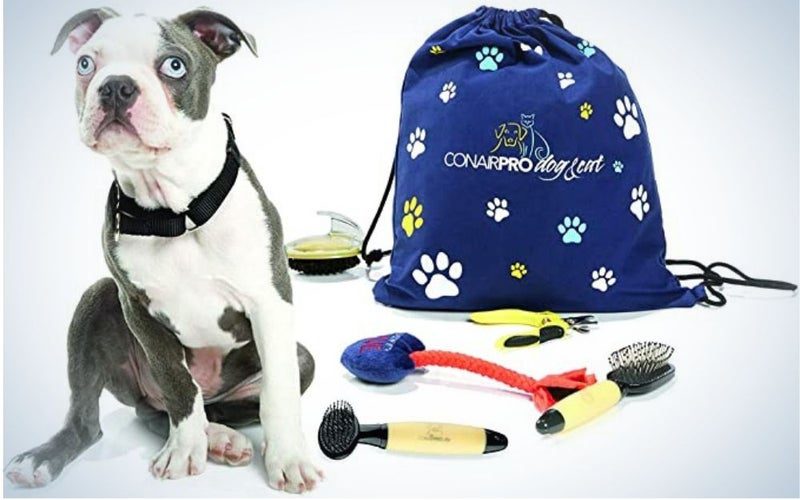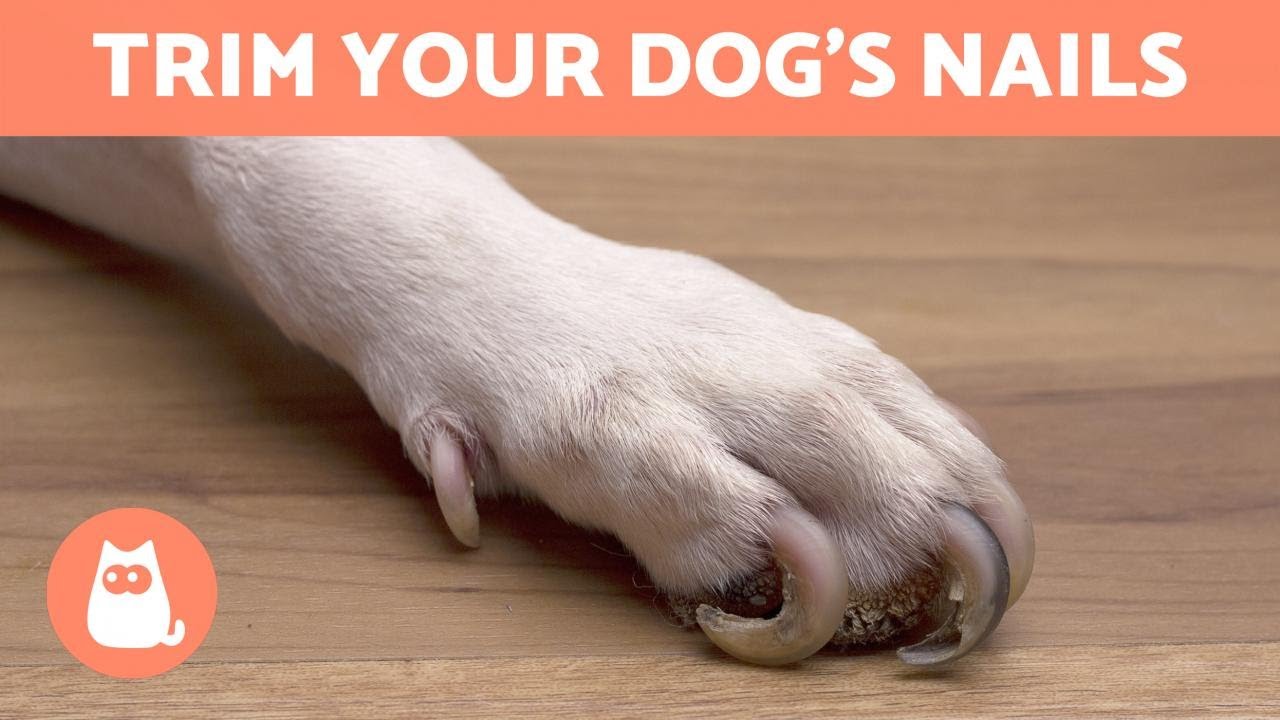If you're a new puppy owner or looking to brush up on your grooming skills, this guide will provide you with all the essential tips and techniques for properly grooming your adorable furry friend. From bathing and brushing to nail trimming and ear cleaning, we'll walk you through the steps to ensure your puppy stays clean, healthy, and happy.
Key Takeaways:
- Start grooming your puppy at a young age to establish a routine and make it easier for them as they grow older.
- Introduce your puppy to grooming tools gradually, using positive reinforcement and treats to create a positive association.
- Regular brushing helps prevent mats and tangles in your puppy's coat, keeping their fur healthy and reducing shedding.
- Trimming your puppy's nails regularly is important to prevent discomfort, pain, and potential injuries.
- Don't forget about dental care - introduce toothbrushing early on and provide appropriate chew toys to promote good oral hygiene.
What is grooming and why is it important for a puppy?
Grooming refers to the regular care and maintenance of a puppy's physical appearance. This includes activities such as brushing their fur, trimming their nails, cleaning their ears, and bathing them. Grooming is important for several reasons.
Firstly, grooming helps to keep a puppy's coat clean and healthy. Regular brushing removes dirt, debris, and dead hair from their fur, preventing matting and tangles. It also stimulates the skin and distributes natural oils, keeping the coat shiny and reducing the risk of skin problems.
Secondly, grooming allows you to check for any signs of health issues or parasites. During grooming sessions, you can inspect your puppy's skin for rashes, sores, or any abnormalities that may require veterinary attention. You can also check for fleas, ticks, or other pests that can cause discomfort or transmit diseases.
Lastly, grooming provides an opportunity for bonding between you and your puppy. Through gentle handling during grooming sessions, your puppy will learn to trust you and enjoy being touched in different areas of their body. This helps develop a positive relationship with your pet and makes future grooming sessions easier.
How often should a puppy be groomed?
The frequency of grooming depends on various factors such as the breed of the puppy, the length of its coat, and its individual needs. Generally speaking:
- Short-haired puppies usually require less frequent grooming compared to long-haired breeds.
- Puppies with thick or double coats may require more frequent brushing to prevent matting.
- Puppies that spend a lot of time outdoors may need more frequent baths to remove dirt and odors.
As a general guideline, most puppies benefit from a grooming session every 4-6 weeks. However, it's important to adapt the frequency based on your puppy's specific needs. For example, if you notice their coat becoming tangled or dirty, it may be necessary to groom them more often.
Remember that grooming is not just about maintaining physical appearance; it's also about ensuring your puppy's comfort and well-being. Regularly check their ears, teeth, and nails in between grooming sessions to ensure they are clean and healthy.
What tools do you need to groom a puppy?
To effectively groom a puppy, you will need a few essential tools:
- Grooming brush or comb: Choose a brush or comb suitable for your puppy's coat type. Bristle brushes work well for short-haired breeds, while slicker brushes are better for longer coats.
- Nail clippers or grinder: Use specially designed nail clippers or grinders made for dogs to trim your puppy's nails. Be cautious not to cut too close to the quick (the pink area inside the nail) to avoid causing pain or bleeding.
- Dog shampoo: Select a mild dog shampoo that is specifically formulated for puppies. Avoid using human shampoos as they can be too harsh for their sensitive skin.
- Cotton balls and ear cleaner: These are used to gently clean your puppy's ears. Never insert anything deep into the ear canal; only clean what you can see externally.
- Toothbrush and dog toothpaste: Brushing your puppy's teeth regularly helps maintain good oral hygiene. Use a toothbrush and toothpaste made specifically for dogs, as human toothpaste can be toxic to them.
- Towels or hairdryer: Have towels ready to dry your puppy after bathing. If you use a hairdryer, ensure it is on a low heat setting and keep it at a safe distance from your puppy's skin.
These are the basic tools you will need for grooming a puppy. Depending on your puppy's specific needs, you may also require additional tools such as thinning shears for trimming their fur or styptic powder to stop bleeding if you accidentally cut their nails too short.
How can you prepare your puppy for their first grooming session?
The first grooming session can be an unfamiliar and potentially stressful experience for a puppy. To help them feel more comfortable, it's important to gradually introduce them to the grooming process:
- Start by getting your puppy used to being touched all over their body. Gently stroke and handle their paws, ears, and tail regularly so they become accustomed to being touched in these areas.
- Introduce them to the grooming tools gradually. Let them sniff and investigate the brushes, combs, nail clippers, etc., before using them on your puppy.
- Associate positive experiences with grooming tools. Offer treats or praise when your puppy shows curiosity or calmness around the tools.
- Practice short handling sessions where you mimic the actions of grooming without actually using the tools. This helps desensitize your puppy to the sensations they will experience during grooming.
- Gradually progress to using the actual grooming tools during these practice sessions. Start with gentle brushing or touching of their paws and reward them with treats or praise for good behavior.
By taking these gradual steps and providing positive reinforcement, you can help your puppy build trust and confidence in preparation for their first official grooming session.
Steps to bathe a puppy
Bathing a puppy is an important part of their grooming routine and can help keep them clean and healthy. Here are some steps to follow when bathing your puppy:
Gather the necessary supplies
Before you start bathing your puppy, make sure you have all the necessary supplies. This includes dog shampoo, towels, a brush or comb, and a non-slip mat for the bathtub or sink.
Prepare the bathing area
Choose a warm and quiet area for bathing your puppy. If using a bathtub, place a non-slip mat on the bottom to prevent your puppy from slipping. Fill the tub with warm water that is not too hot or cold.
Wet your puppy
Gently wet your puppy's fur with warm water using a handheld showerhead or by pouring water over them with a cup. Make sure to avoid getting water in their ears and eyes.
Apply shampoo and lather
Use a dog-specific shampoo that is gentle on your puppy's skin. Apply the shampoo starting from their neck down to their tail, avoiding their face. Gently massage the shampoo into their fur to create a lather.
Rinse thoroughly
Rinse off all the shampoo from your puppy's fur using warm water. Make sure to remove all traces of soap as leftover residue can irritate their skin.
Dry your puppy
After rinsing, gently squeeze out excess water from your puppy's fur. Wrap them in a towel and pat dry, avoiding vigorous rubbing which can cause tangles or discomfort. You can also use a hairdryer on low heat if your puppy is comfortable with it.
Brush and praise
Once your puppy is dry, use a brush or comb to gently remove any tangles or mats from their fur. Praise and reward them throughout the grooming process to make it a positive experience for them.
Safely trimming a puppy's nails without hurting them
Trimming a puppy's nails is an essential part of their grooming routine, but it can be intimidating if not done properly. Here are some tips to safely trim your puppy's nails without causing them any harm:
Choose the right tools
Invest in a good quality pair of dog nail clippers or a grinder specifically designed for dogs. Ensure that the clippers are sharp and clean before use.
Familiarize your puppy with handling their paws
Prior to trimming their nails, get your puppy comfortable with having their paws touched and handled. This will help reduce anxiety during the nail trimming process.
Identify the quick
The quick is the sensitive part inside your puppy's nail that contains blood vessels and nerves. It is important to avoid cutting into the quick as it can cause bleeding and pain. In light-colored nails, the quick appears as a pink area, while in dark-colored nails, it may be harder to see.
Take small cuts
To prevent accidentally cutting into the quick, take small cuts off the tip of each nail at a time. Gradually work your way back towards the desired length while checking for signs of the quick.
If you accidentally cut into the quick:
- Stay calm and reassure your puppy.
- Gently apply styptic powder or cornstarch to the bleeding nail to help stop the bleeding.
- Offer your puppy a treat or distraction to help them associate the experience with something positive.
File or smooth the nails
After trimming, use a nail file or grinder to smooth any rough edges and prevent snagging. Be cautious not to over-file, as this can also cause discomfort.
Reward and praise
Once you have finished trimming your puppy's nails, reward them with treats and praise for their cooperation. This will help create a positive association with nail trims in the future.
The proper way to brush a puppy's fur to avoid matting
Regular brushing is crucial for maintaining a healthy coat and preventing matting in puppies. Here are some steps to properly brush your puppy's fur:
Select the right brush
Choose a brush that is suitable for your puppy's coat type. For example, slicker brushes work well for long-haired breeds, while bristle brushes are better suited for short-haired breeds. Consult with your veterinarian or groomer if you're unsure about which brush to use.
Start with gentle handling
Prior to brushing, get your puppy comfortable with being touched all over their body. Gradually introduce them to the sensation of brushing by using light strokes on their back and gradually moving towards more sensitive areas like their belly and legs.
If your puppy has mats:
- Avoid pulling or tugging at mats as it can be painful for your puppy.
- Gently work through small sections of the mat using your fingers or a detangling spray specifically designed for dogs.
- If the mat is too severe or close to the skin, it may be best to seek professional grooming assistance.
Brush in the direction of hair growth
When brushing your puppy's fur, always brush in the direction of hair growth to prevent discomfort and breakage. Start at the head and work your way towards the tail, paying attention to areas that are prone to matting such as behind the ears and under the legs.
Use a comb for finishing touches
After brushing, use a comb with wide-spaced teeth to ensure all tangles and loose hairs are removed. This will leave your puppy's coat looking neat and well-groomed.
Reward and reinforce positive behavior
Praise and reward your puppy throughout the brushing process to make it an enjoyable experience for them. This will help create a positive association with grooming sessions and make future brushing easier.
Cleaning a puppy's ears and teeth: special considerations and techniques
Maintaining clean ears and teeth is essential for your puppy's overall health. Here are some special considerations and techniques for cleaning their ears and teeth:
Cleaning your puppy's ears
Ears:
- Check your puppy's ears regularly for any signs of redness, discharge, or odor which could indicate an infection.
- Gently wipe the outer part of their ear using a soft cloth or cotton ball dampened with a veterinarian-recommended ear cleaner. Avoid inserting anything into their ear canal as it can cause injury.
- If you notice any abnormalities or if your puppy shows signs of discomfort during ear cleaning, consult with your veterinarian.
Brushing your puppy's teeth
Teeth:
- Start getting your puppy accustomed to having their teeth brushed from a young age. Use a dog-specific toothbrush and toothpaste that is safe for them to swallow.
- Gently lift your puppy's lips and brush their teeth using circular motions. Focus on the outer surfaces of the teeth as that is where plaque and tartar tend to accumulate.
- Gradually increase the duration of brushing sessions as your puppy becomes more comfortable with the process.
- If your puppy resists tooth brushing, consult with your veterinarian for alternative dental care options such as dental chews or water additives.
Making grooming sessions enjoyable for your puppy
Grooming sessions can be a positive and bonding experience for both you and your puppy. Here are some tips to make grooming sessions enjoyable for them:
Start early and be consistent
Introduce grooming activities to your puppy from a young age so they become familiar with the process. Be consistent with regular grooming sessions to establish a routine.
Use positive reinforcement
Reward your puppy with treats, praise, and gentle petting throughout the grooming session. This will help create positive associations with grooming activities.
If your puppy shows signs of fear or anxiety:
- Take breaks if needed and gradually increase the duration of each session over time.
- Try using calming techniques such as playing soft music or using pheromone sprays designed to reduce stress in dogs.
- If severe anxiety persists, consult with a professional dog trainer or behaviorist for guidance.
Make it a bonding experience
Talk to your puppy in a soothing voice and maintain eye contact during grooming sessions. This will help strengthen the bond between you and your puppy.
End on a positive note
Finish each grooming session with praise, treats, or a fun activity such as playtime or a short walk. This will leave your puppy associating grooming with positive experiences.
| Conclusion | |
| Grooming your puppy is an essential part of their overall health and well-being. By following the proper grooming techniques, you can ensure that your puppy's coat remains clean, healthy, and free from tangles or mats. Regular grooming also allows you to bond with your puppy and monitor their overall condition. Remember to start grooming your puppy early to get them accustomed to the process and make it a positive experience for both of you. | |
When should you first groom a puppy?
At the age of 10-12 weeks, it is recommended to start grooming your puppy, even if they have short hair or a smooth coat. It is important to introduce them to grooming at this young age after their second round of vaccinations. Delaying grooming until later in life may cause your pet to experience stress during the process.
How do you groom a puppy for the first time?
Nevertheless, you can begin grooming your puppy at home immediately. The earlier you start familiarizing them with grooming procedures, the more well-mannered they will become in the future. Use a soft-bristled brush to comb their fur, delicately touch their face with your fingers, and practice holding their paws. Over time, you can introduce them to the process of trimming their nails.
Can I groom my puppy myself?
It is not recommended to attempt to groom your dog's hair without proper training. Professional groomers have the necessary tools and expertise to safely groom sensitive areas and understand the specific grooming requirements for different dog breeds. It is best to keep your household scissors in a safe place and leave grooming to the professionals.
How should I groom my puppy?
Start by using a small brush or comb to smooth out tangled hair, paying extra attention to areas like the backside, tail, and legs. Brush the coat in both directions, from front to back and back to front, to enhance the natural shine of silky coats. If you have a puppy with long hair, it may be beneficial to have them professionally groomed to ensure they stay clean.
Is it OK to groom a 3 month old puppy?
Typically, it is recommended that puppies go to the groomer after they have received their first set of vaccinations, which is usually around 12 weeks old. However, they should not wait longer than 6 months. Ideally, it is best to bring a new puppy to the groomer between 12 and 16 weeks of age. It is important to note that the socialization period for dogs begins to end at around 4 months of age.
What does a puppy cut look like?
The puppy cut is a hairstyle for dogs that involves cutting their fur to the same length all over. This is usually around 1-2 inches on the body, legs, tail, head, and ears. It is commonly achieved using a clipper with a long guard comb. The goal is to create a smooth and even coat without any visible marks or sharp edges.

















